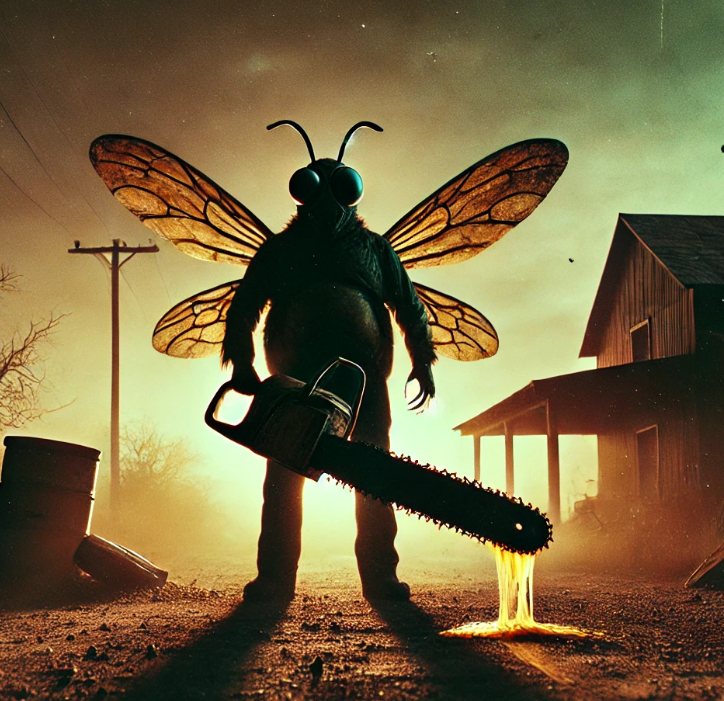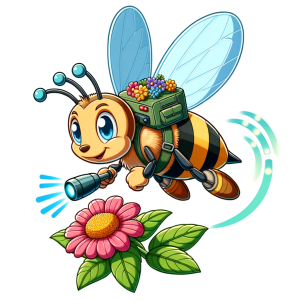
The Cannibal Bees: How Honey Bees Eat Their Own to Survive
Picture this: A thriving honey bee colony buzzing with life, queen bees laying thousands of eggs, and worker bees tirelessly tending to their larvae. But then—disaster strikes. The flowers dry up, pollen runs out, and suddenly, the colony faces a brutal choice. Starvation or… cannibalism?
That’s right. When food gets scarce, worker bees do something shocking: they eat their own young. Not out of malice, but necessity. By consuming eggs and larvae, they recycle nutrients, ensuring the survival of the fittest until food supplies improve.
But here’s where it gets really interesting: Scientists have discovered a special pheromone—E-β-ocimene—that might be a game-changer. It turns out, this tiny chemical signal could convince honey bees to hold off on their grisly survival tactic and start raising their young again, even in tough times. Let’s dive into the fascinating science behind this phenomenon.
Honey Bees: The Ultimate Survivalists
Bees are nature’s master planners. Unlike humans, who can hoard snacks during a crisis, honey bees depend on an unpredictable natural pantry—flowers. They gather nectar for carbohydrates and pollen for protein, storing these precious resources in their hives. But when a season of drought or poor weather hits, food supplies dwindle, and the colony faces a difficult dilemma.
To survive, honey bee workers cut down on their population by reducing brood rearing. This means fewer hungry mouths to feed. The primary method? Eating their own eggs and larvae—particularly the youngest ones that require the most care.
Brutal, but effective. Jonathan Swift would approve.
The Secret Weapon: E-β-Ocimene to the Rescue?
While this survival strategy works in the short term, long-term brood cannibalism can be disastrous. Fewer new bees mean a weaker colony and a harder time bouncing back when food becomes available again.
Enter E-β-ocimene, a volatile pheromone produced by eggs, young larvae, and even the queen. Scientists found that when food is abundant, this chemical signal is strong, encouraging bees to keep raising their young. But in pollen-starved colonies, E-β-ocimene levels drop—coinciding with the rise of brood cannibalism.
So, researchers had an idea: What if they added synthetic E-β-ocimene to struggling colonies? Would it trick the bees into believing food was on the way and stop them from eating their young?
A Bold Experiment: Can We Hack Bee Behavior?
To test their hypothesis, scientists set up two groups of honey bee colonies. One group received supplemental pollen—an instant food boost. The other was left to struggle with low supplies. Then, the researchers measured E-β-ocimene levels.
Here’s what they found:
- The pollen-fed colonies had a surge in E-β-ocimene and immediately ramped up brood rearing.
- The pollen-deprived colonies had low E-β-ocimene and continued their grim practice of eating eggs and larvae.
But then came the real experiment: Scientists introduced synthetic E-β-ocimene into some of the pollen-deprived hives. The result? Colonies that received the pheromone held onto their eggs and young larvae instead of devouring them. Even without extra food, the chemical tricked them into believing conditions had improved, shifting them away from survival mode.
Why This Matters: Bee Survival = Our Survival
This research is more than just a weird bee fact—it has real-world implications. Honey bees are crucial pollinators, responsible for one-third of the food we eat. But climate change, habitat loss, and pesticide exposure are making their lives harder. Understanding how bees manage their population in response to environmental stressors could help conservationists develop better strategies for protecting them.
For example, beekeepers might be able to use synthetic E-β-ocimene to support struggling hives during rough seasons. If colonies can be nudged away from brood cannibalism and back into growth mode, it could mean stronger bee populations overall.
What’s Next? The Future of Bee Science
This study opens up exciting new questions. Could other pheromones help regulate colony health? Can we apply this knowledge to wild bee populations, not just domesticated hives? Scientists are just beginning to crack the chemical code of bee communication, and what they find could reshape how we support these vital pollinators.
One thing’s for sure: Next time you see a honey bee buzzing around your garden, know that behind that tiny insect is an entire world of complex survival strategies, chemical signals, and social coordination. And sometimes, even a little bit of dark, strategic cannibalism.
Let’s Explore Together!
What do you think about this research? Does it change how you see honey bees? Drop a comment below and let’s chat! Here are some fun questions to ponder:
- If you were a beekeeper, would you use synthetic E-β-ocimene to help your hives?
- What other ways do you think bees might communicate with each other?
- What’s the wildest science fact you’ve learned recently?
And if you found this article fascinating, share it with your friends—because science is always better when we explore it together!
Feed Your Curiosity:
In a world of competing narratives, science must remain front and center. This Week in Science brings you the latest research, cutting-edge discoveries, and actionable insights every week. This free newsletter is an essential resource for educators and lifelong learners navigating today’s challenges. Subscribe now to be part of the movement that keeps science accessible and impactful. If you liked this blog, please share it—your referrals are vital for spreading the truth.



